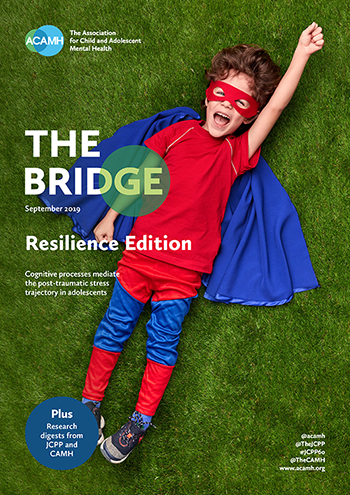Welcome to The Bridge. In this edition we bring together a number of papers that broadly discuss the theme of resilience and developing resilience through therapy. Resilience can be described as having the capacity to recover quickly from difficulties or to be able to “spring back into shape”. It may explain why some young people are more vulnerable and some young people more resilient to similar stressors or adverse childhood experiences.
Dunning et al. comment that Mindfulness-based interventions are generally popular at present and they also raise the suggestion that enthusiasm may have moved ahead of the evidence base. They have therefore undertaken a systematic literature search to explore the current evidence base for Mindfulness based interventions in young people.
Bennet et al. highlight that the demand for treatment in CAMHS services outweighs supply and that waiting lists for CAMHS services can be long. They look at the efficacy of using ‘low intensity’ treatments, such as self-help materials, as a way of increasing young people’s access to evidence-based psychological treatments. Results look positive, but they highlight that the challenge is knowing what type of self-help would be better suited to which patients. Resilience may be a factor in this.
Meiser-Stedman et al. report their prospective longitudinal study exploring how cognitive processes may play an important role in the onset and maintenance of PTSD symptoms in some young people exposed to trauma. Participants were categorized as being on a resilient, recovery or persistent trajectory. This resonates with clinical experience of how different young people respond differently to similar traumatic events.
Gillespie et al. compare the 16-week and 24-week DBT programmes delivered by CAMHS teams in Ireland to determine whether a longer DBT-A programme would yield improved outcomes for participants. The cornerstones of DBT therapy: Mindfulness, interpersonal effectiveness, distress tolerance and emotional regulation, all aim to build resilience over time. The question of how much time in therapy is needed clearly has significant service delivery and cost implications.
Martin et al. highlight that children with ADHD often present with other mental health symptoms (anxiety, depression, loneliness) but that interestingly, young people with ADHD may also have a positive self-perceptual bias (e.g. an overestimation of their own abilities) and that this may hinder the accurate assessment of other mental health problems, so symptoms of anxiety, depression, and loneliness may be underestimated in these young people. This was surprising to read but on reflection, did not feel unfamiliar in my experience of clinical practice.
I do hope you find this edition The Bridge helpful and interesting, please share it with colleagues, and a PDF version is available to download (top right).
